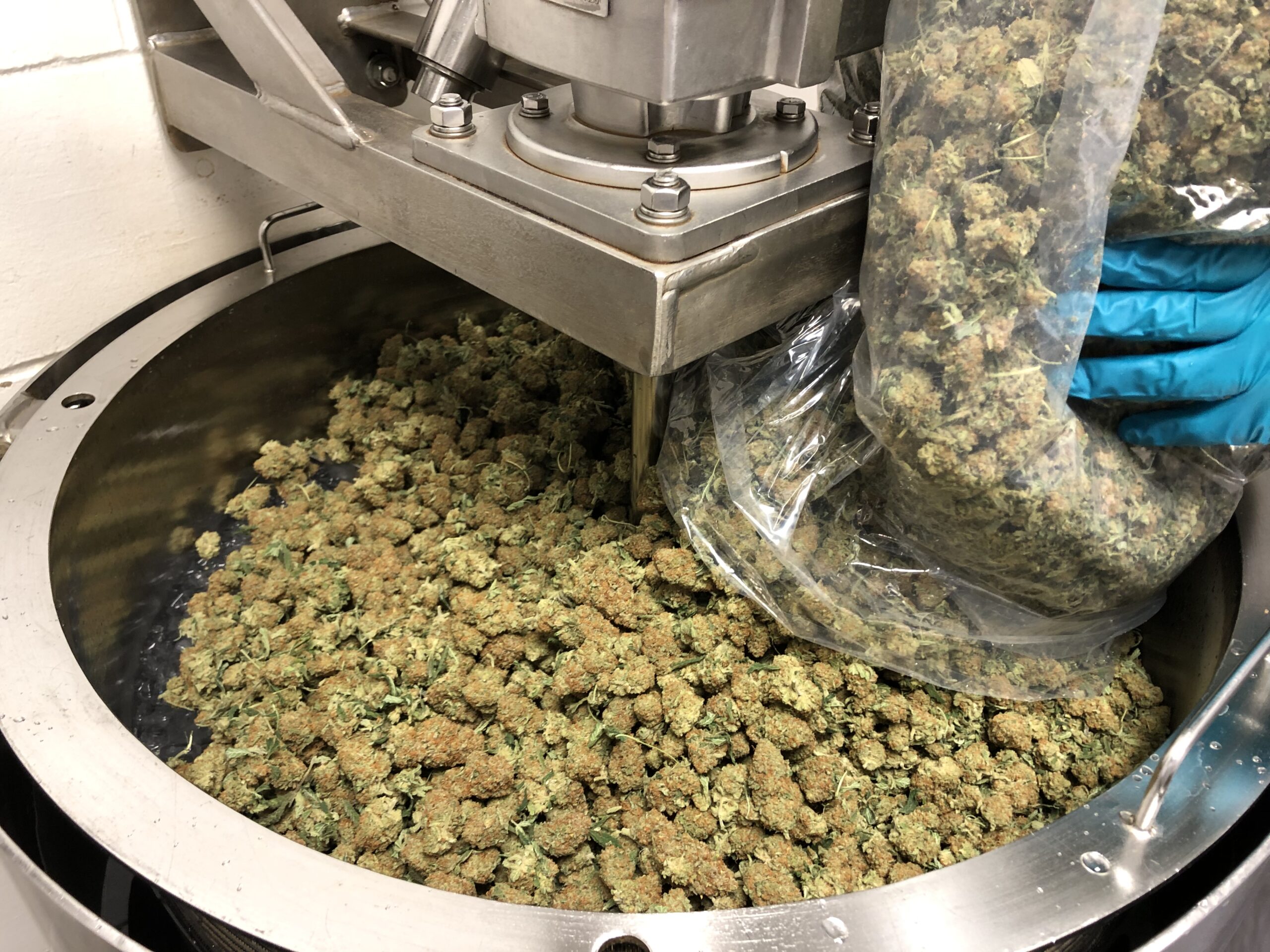They find depth, wisdom, real genius and true art where others can’t. Their passion can be overwhelming, especially if you disagree with their thesis on the relative merits of “their” interest vis-a-vis something related, but probably newer. And while some hobbyists find meaning in exclusivity, True Believers are missionaries, always on the lookout for new converts.
Given the right conditions, some of those missionaries can be pretty persuasive. Maybe the best example of this is vinyl records. By now the growing popularity of vinyl isn’t news. But still, the rise of vinyl from the brink of extinction in the early 90’s to outpacing CD sales last year is counter-intuitive: in a world where music has never been easier to find, or more convenient to play, the most labour-intensive listening experience is growing. The vinyl heads were right all along.
There’s a lesson here that hasn’t been missed by cannabis brands. Hashish is basically the vinyl of the cannabis industry.
According to Dan Sutton, the CEO of Tantalus Labs in BC, it’s an apt comparison. “The vinyl connoisseur understands the importance of needles, dials—they care about details. Hash requires attention to detail.”
It requires attention to details to produce and to appreciate. And, as advocates will tell you, one of the nice things about hash is that it provides a cleaner high that won’t disrupt that attention. Hash is basically concentrated cannabis—which is why it was legalized in Canada on October 17, 2019 with the other concentrates and oils. It’s made from extracting, and sometimes compressing those sticky little crystals that frost your favourite flower, called trichomes. The more effectively the trichomes are removed, the cleaner and more potent the hash.

Photography by HEXO
It’s like, you know how after finishing a bowl of Lucky Charms, the leftover milk at the bottom of your bowl is sweet and delicious (and slightly discoloured)? Imagine eating bowl after bowl of Lucky Charms, each new helping making the milk dregs sweeter and sweeter, then taking all that magically delicious milk and somehow squeezing all the flavour and sweetness out of the liquid, like how they make cheese. And finally, pressing all that sugary-marshmallowy goodness into a dessert square. That’s concentrates…

You know how after finishing a bowl of Lucky Charms, the leftover milk at the bottom of your bowl is sweet and delicious? That's concentrates.
The one problem with that analogy is the cereal. Unlike the diabetic nightmare described above, a brick of hash doesn’t all come from the same plant. It takes a village. “We use trim and the tiny buds that are too little to bag to make hash,” explains Amy Weinstein, Senior Manager, Sales and Engagement at 48North. “The trichomes are removed in a dry sift process and then heat-pressed into a brick. The experience might be more nuanced or amplified since it is concentrated, so contains more terpenes, which really define the experience. However, a lot of hash isn’t strain specific.”
Sutton said the same thing. “Some flowers work amazingly for hash, some not. Looking through a jeweller’s loupe what we’re looking for are large trichomes that easily fall off in the sifting process.” Their mixture, Bricked Blonde Hash, seems to be working. After its release this summer, it quickly became BC’s top selling hash.
And the concentrates market is just now picking up steam. In Colorado, concentrates represent 10% of the market. In Canada, they represent—currently—just 2.3% of the market. Andy Palalas, chief revenue officer of High Tide Inc., which operates over 30 Canna Cabana retail locations across the country, says that concentrates represent a segment of the Canadian cannabis industry perhaps best primed for growth.

But before it had any hope of becoming an API, hash was just pot’s most nostalgic version of itself, a special treat for those in the know. This actually highlights another reason why the hash as vinyl analogy is apt. The reason vinyl survived the 90’s was because aficionados kept the market alive at flea markets, secondhand shops, and amongst themselves. The industry doesn’t track second-hand sales obviously, which means the market is even bigger than it seems. Dan Sutton, the Tantalus Labs chief executive who once shared a bowl of hash with kind magazine back before COVID-19, believes the appetite for concentrates in Canada is ripe for a mad dash to hash.
“What we’ve found in our research is that the market already definitely exists. They’ve been serviced for decades,” he says. “We just want to meet them where they live.” That means high quality at a low cost.
More products hitting the market will help more people learn about hash, but just as vinyl records haven’t really cut into Spotify’s bottom line, hash will never overshadow cannabis (partly because it’s cannabis, but you knew what I meant). It’s just different enough, in potency, in taste, in experience to attract the future faithful and intimidate the masses. “There are a lot of hash advocates out there,” says Sutton. “You just have to find them.”







